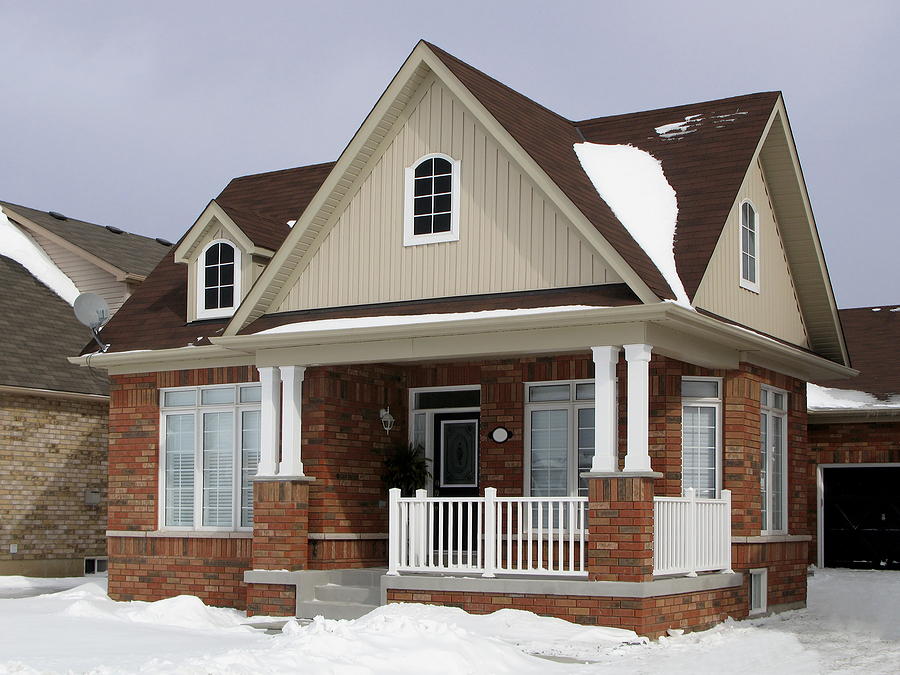Common Winter Roofing Problems to Watch For
As winter weather draws near, many homeowners want to make sure that their homes are secure, sealed, and safe for the winter. The roof can be a source of concern over the winter months. Snow, wind, ice, and tree limbs are all a risk, especially if your roof is on the older side. All homeowners, whether their roof is old or new, should be on the lookout for certain common winter roofing problems.

Condensation
Condensation will occur when warm air meets a cold surface. A prime candidate for condensation is an improperly insulated attic. Condensation can lead to mold and mildew and damage the interior structure of your home. Proper ventilation can help prevent condensation. Inadequate ventilation can damage the roof, the decking, and shorten your roof’s lifespan. Check for condensation in the attic throughout the winter months to make sure there is no problem with your roof that needs attention.
Flashing Leaks
Most homeowners have a sloped roof and sloped roofs are prone to leaky flashings. Flashings are the strips of metal that are placed along the edges, corners, and ridges of your roof. If they are not installed correctly or are damaged during a storm, they can pull away from the roof and lead to leaks. Every six months you should inspect your flashings to make sure that there are no problems.
Winter Weather
Winter weather can be a challenge for most roofs in many regions. Wind storms can have gusts strong enough to loosen shingles. If you notice any shingles on the ground or sticking up after a storm, it’s important to call a roofing repair contractor to replace those shingles before more damage can occur. Winter storms can also create problems with trees around your property. Tree limbs weighed down with ice can scrape your roof and damage the shingles, and branches that fall on your roof can cause even more damage. It’s important to keep an eye on any trees surrounding your home and trim all branches that come within a few feet of the roof.
Ice Dams and Icicles
Ice dams result when the upper area of an icy roof begins to thaw, but the lower area is still frozen. The melting ice and snow from the top, flows down and refreezes along the lower sections and gutters, creating an ice dam. When melted water pools behind the dam, it will likely leak into your home through cracks in the roofing material. With proper insulation and good attic ventilation, ice dams are unlikely to occur. If you notice one forming, call a roofing repair contractor to help you remedy the situation.
Icicles are less extreme but can also be damaging. The excessive weight of icicles can cause flashing and gutter damage. The best way to avoid icicles that can damage your home is to make sure that your gutters are clear from leaves and other debris.
When to Contact a Roofing Repair Contractor
If you aren’t sure how your roof is handling the winter weather and have any concerns about damage, contacting a roofing repair contractor is a smart decision. These roofing experts can speak to you and look at your roof for potential problems. They can help remedy a problem that exists or suggest preventive measures to get your roof through the winter without issue.
Winter weather can be rough on your home and it’s best to be proactive. Responding to a problem is usually much more difficult and can make what would have been a small repair into a large and expensive crisis. If you have any concerns about your roof this winter, contact All-Nu Construction.

